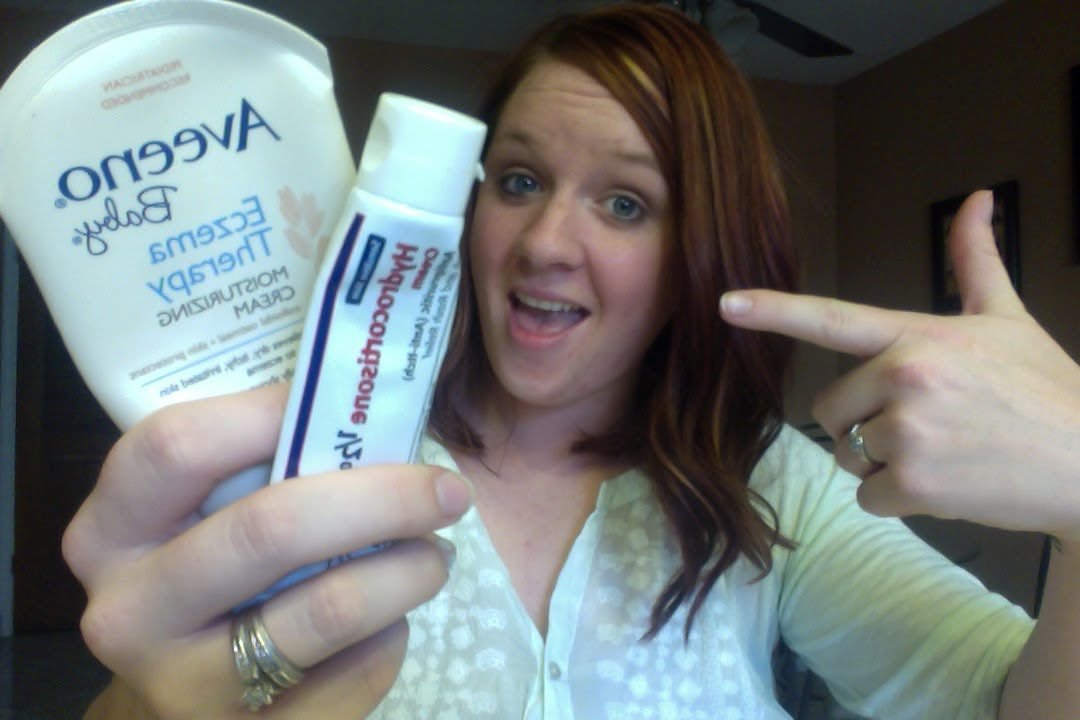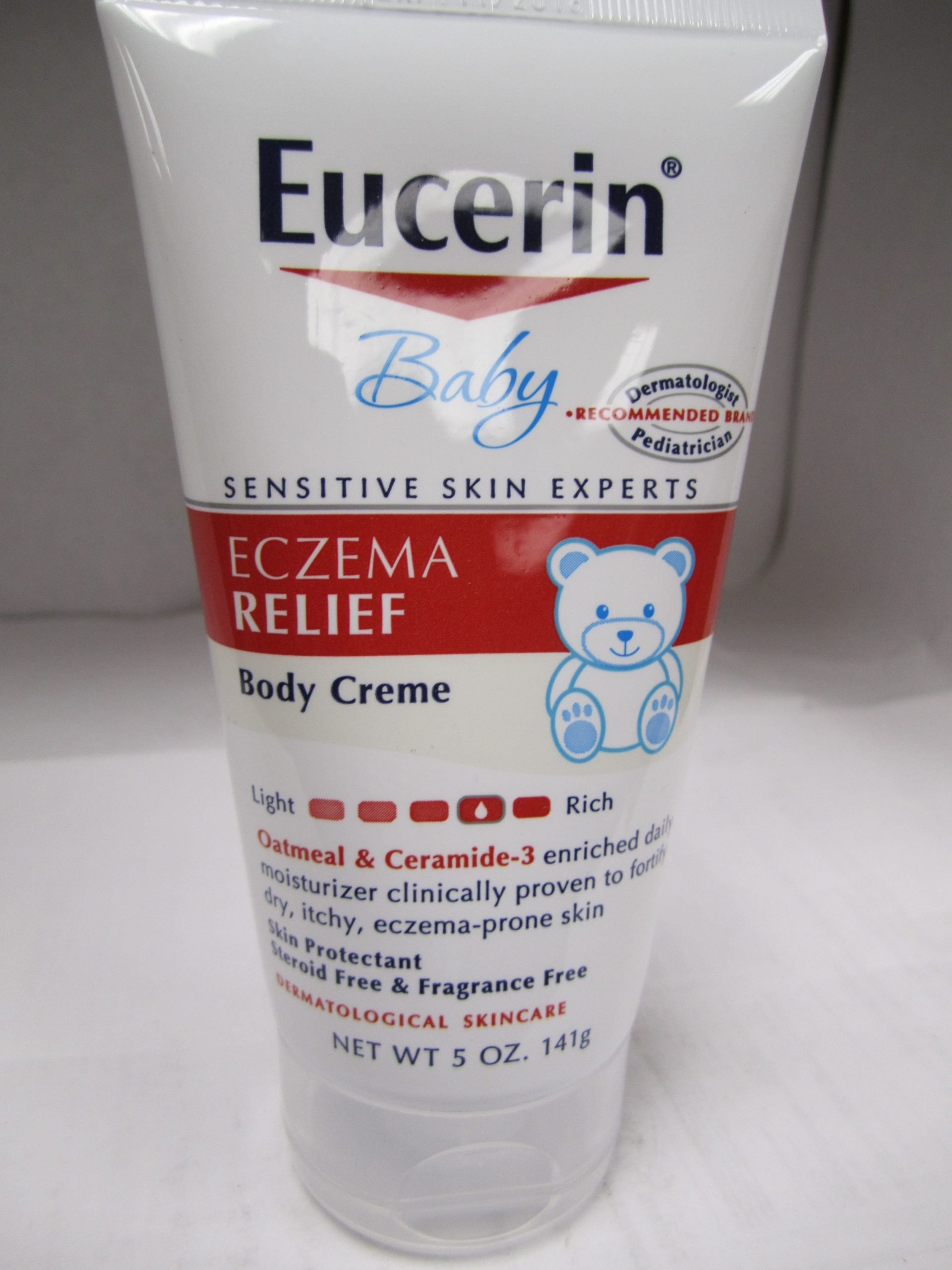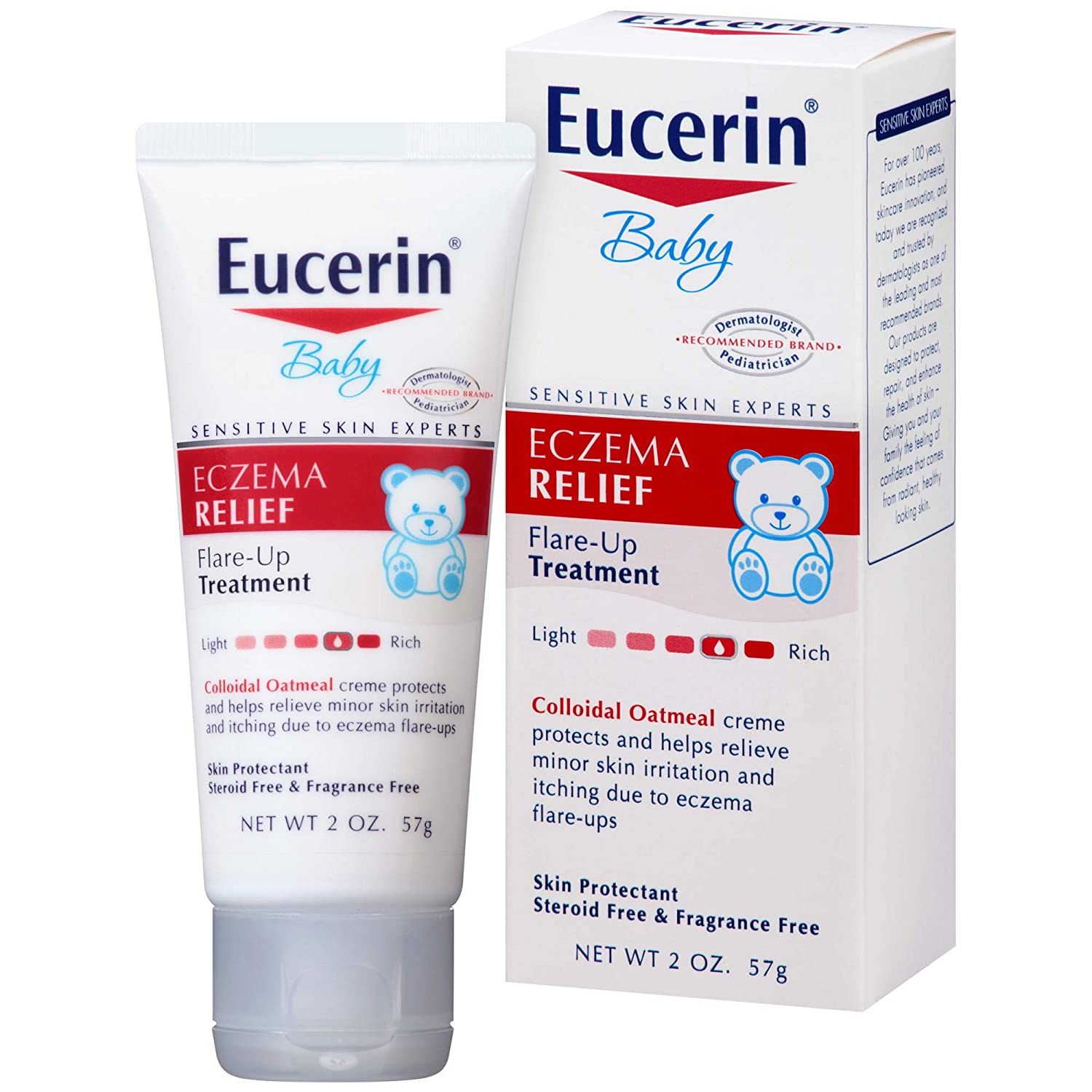How To Use Skin Cream Or Ointment
Side Effects With Using Hydrocortisone Cream As Eczema Treatment
In my teens, I was first introduced to using hydrocortisone cream for my eczema treatment. Since then, every time I had an outbreak, I would turn to it. This continued for more than ten years. However, in the last few years, I noticed that increasingly applying hydrocortisone creams on my affected skin is not as effective as before. In fact, it got harder and harder to control my eczema. My affected skin also got thinner and I would get abrasions very easily. I then decided to find out the truth behind the side effects of using hydrocortisone creams.
Hydrocortisone cream is one kind of topical corticosteroids and is easily available at your local store without prescription. They are packaged in various forms such as creams and lotions and are marketed under different brands.
Corticosteroid creams are topical skin applications which are used for skin itching, redness, discomfort and other skin-related problems. They come in varying strengths. Stronger ones are only available via prescription by your doctor. Corticosteroids are referred to as steroids. The term steroids often have a negative ring to it because of a number of side effects that this drug is known to bring. Corticosteroids for eczema are different from anabolic steroids, which are used by some athletes to increase their endurance.
How To Use Hydrocortisone Cream
Please follow the procedure below before applying hydrocortisone cream on your babys skin:
- Make sure your hands are completely clean before you put the cream on your baby.
- Take out as much cream as required on your index finger, and then spread it as thinly as possible on the affected part of the skin.
- Gently rub it in until it feels like the skin has absorbed the medication. It is important to be gentle as rough or hard rubbing can cause irritation.
- Avoid using hydrocortisone on skin areas that are not affected. This reduces the risk of it getting absorbed into your childs bloodstream and having a negative impact on their growth and development.
- Avoid applying the cream anywhere near your babys eyes.
- If you find that your babys skin turns redder and is splattered with whitish patches or has a transparent yellow liquid oozing out, it might mean the skin is infected. In this case, consult your doctor immediately.
Recommended Reading: How To Calm Eczema Redness
When To Call A Doctor
Make the call if your babys eczema doesnt begin to get better within a week of starting over-the-counter hydrocortisone creams. It may be time for a prescription medicine.
Also check with your doctor if yellow or light brown crust or pus-filled blisters appear on top of the eczema. This could be the sign of a bacterial infection that needs antibiotics.
You should call your doctor if your baby is around anyone who has cold sores or genital herpes. Eczema can make your little one more likely to pick up those germs.
What Does Sparingly Mean

Sparingly is a meaningless term that has, unfortunately, been automatically printed out by the labeling software used by pharmacists for many years. It creates an impression that the creams are dangerous and should be minimized. If anything, the opposite is true. Creams should be used in adequate amounts to cover the entire area involved so that a film is obvious on the skin. The word sparingly has recently been removed from medication labels.
Also Check: Soap For Sensitive Skin Eczema
Recommended Reading: Best Treatment For Eczema On Feet
Hydrocortisone Cream Usp 25% 30 Grams Label
NDC 0316-0193-30
WARNING: Keep out of reach of children.
For external use only. Not for ophthalmic use.
Each gram contains: 25 mg Hydrocortisone USP in a cream base consisting of purified water, cetyl alcohol, glycerin, stearyl alcohol, propylene glycol, sodium lauryl sulfate, cetyl palmitate and sorbic acid.
Usual Dosage: 2 to 4 applications daily. See package insert for full prescribing information.
TO OPEN: Use cap to puncture seal.
IMPORTANT: Do not use if seal has been punctured or is not visible.
Store at 20°C-25°C .
See crimp of tube for Lot Number and Expiration Date.
Manufactured and Distributed by:
WARNING: Keep out of reach of children.
For external use only.
Not for ophthalmic use.
30 grams
Each gram contains: 25 mg Hydrocortisone USP in a cream base consisting of purified water, cetyl alcohol, glycerin, stearyl alcohol, propylene glycol, sodium lauryl sulfate, cetyl palmitate and sorbic acid.
Usual Dosage: 2 to 4 applications daily. See package insert for full prescribing information.
Directions for puncturing tube seal: Remove cap. Turn cap upside down and place puncture tip onto tube seal. Push cap down until seal is punctured. Screw cap back on to reseal tube.
IMPORTANT: Do not use if seal has been punctured or is not visible.
Store at 20°-25°C .
See end of carton for Lot Number and Expiration Date.
Manufactured and Distributed by:
Crown Laboratories, Inc., Johnson City, TN 37604
P11338.00
Managing Eczema In Winter And Year Round: A Parents Guide
Cold, dry outdoor air and indoor heating can rob skin of its natural moisture in the winter. Red, crusty, dry patches can be common on a baby’s skin, particularly in winter, and cause concern for parents. Such symptoms can be treated, however, and many babies and children do outgrow the dry, itchy skin of atopic dermatitis, also known as eczema.
We spoke with pediatric dermatologist Katherine Puttgen to learn more.
Read Also: What Kinds Of Eczema Are There
What Causes Eczema In Infants And Children
Eczema is brought about by the complex interplay of a genetic predisposition and the childs environment. Many things from the climate to possible allergens can cause eczema to flare. We know that eczema tends to run in the families with a predisposition to other atopic diseases, such as food allergies, asthma and hay fever. Individuals with atopic dermatitis may lack certain proteins in the skin, which leads to greater sensitivity. Parents with eczema are more likely to have children with eczema. However, the exact way it passes from parents to children is still not known. Most children who have eczema will show signs of the condition in the first year of life. It tends to wax and wane in severity.
How Do You Use Hydrocortisone For Eczema
Youll use the same general steps to apply hydrocortisone whether its a cream, ointment, lotion, or gel. Read the instructions that come with your specific product before your first use.
If your hydrocortisone cream is a prescription, you might have specific instructions to follow from your medical professional. Hydrocortisone should be used once or twice a day unless a doctor has advised you to use it more often.
The general instructions for hydrocortisone use is the same for adults and children. Its important to:
- wash and dry your hands before use
- apply a thin layer of hydrocortisone to any irritated areas.
- rub in until its disappeared into your skin
- apply to all affected areas
- not get hydrocortisone in open cuts or sores
- wash and dry your hands after using
- wait at least 10 minutes before applying other skin care products
Also Check: Best Bar Soap For Eczema
Does Hydrocortisone Help Eczema
Hydrocortisone cream is one of the most common eczema treatments. It can help reduce the itching and swelling of eczema flare-ups. The right strength for you will depend on the severity of your flare-ups and how your skin responds to hydrocortisone. You might need to try a few strengths before you find the right one for you.
Is A Cure Or Better Treatment For Eczema On The Horizon
Without a cure on the near horizon, we here at Johns Hopkins are creating an Eczema Day Treatment Unit to help our patients with moderate to severe eczema keep their symptoms under control and prevent flare-ups. We anticipate that this novel, multidisciplinary program will include experts from Child Life, behavioral psychology, allergy, dermatology and infectious diseases to provide the comprehensive care these children need care that cannot be provided in an average clinic visit.
A primary goal of the day treatment unit will be education children and their families will learn techniques such as wet-wrap therapy, to help deeply moisturize the skin. This therapy involves coating the skin with a topical ointment, followed by a greasy ointment like petroleum jelly, then dressing in wet pajamas, followed by dry pajamas, allowing the skin to soak in the moisture.
Also Check: Eczema In Elbow Crease Treatment
When And How Are Topical Steroids Used
As a rule, a course of topical steroid is used when one or more patches of eczema flare up. The aim of treatment is to clear the flare-up and then to stop the steroid treatment.
It is common practice to use the lowest-strength topical steroid which clears the flare-up. So, for example, hydrocortisone 1% is often used, especially when treating children. This often works well. If there is no improvement after 3-7 days, a is usually then prescribed. For severe flare-ups a may be prescribed from the outset.
Sometimes two or more preparations of different strengths are used at the same time. For example, a mild steroid for the face and a moderately strong steroid for eczema on the thicker skin of the arms or legs. A very strong topical steroid is often needed for eczema on the palms and soles of the feet of adults because these areas have thick skin.
You should use topical steroids until the flare-up has completely gone and then stop using them. In many cases, a course of treatment for 7-14 days is enough to clear a flare-up of eczema. In some cases, a longer course is needed.
Many people with eczema require a course of topical steroids every now and then to clear a flare-up. The frequency of flare-ups and the number of times a course of topical steroids is needed vary greatly from person to person.
After you finish a course of topical steroid, continue to use moisturisers every day to help prevent a further flare-up. .
Who Can And Cannot Use Hydrocortisone Skin Treatments

Most adults and children aged 10 years and over can use hydrocortisone skin treatments.
Do not use hydrocortisone skin treatments on children under 10 years old unless their doctor recommends it.
Hydrocortisone is not suitable for some people. Tell your pharmacist or doctor before starting the medicine if you:
- have ever had an allergic reaction to hydrocortisone or any other medicine
- have a skin infection or eye infection
- are trying to get pregnant, are already pregnant or youâre breastfeeding
Recommended Reading: Best Laundry Detergent For Sensitive Skin Eczema
Not All Options Are Appropriate For Young Skin
Casey Gallagher, MD, is board-certified in dermatology. He is a clinical professor at the University of Colorado in Denver, and co-founder and practicing dermatologist at the Boulder Valley Center for Dermatology in Colorado.
Topical steroids are often used for children in the treatment of many types of skin rashes, including atopic dermatitis and contact dermatitis, as well as itchy dry skin and insect bites. While effective, special care must be taken when selecting these drugs for and using them on kids, as they are more apt to develop side effects. This applies to both over-the-counter and prescription options alike.
As a general rule, low-potency topical steroids should be used on children whenever possible in order to minimize risks.
What Happens If I Overdose
Seek emergency medical attention or call the Poison Help line at 1-800-222-1222 if anyone has accidentally swallowed the medication.
High doses or long-term use of hydrocortisone topical can lead to thinning skin, easy bruising, changes in body fat , increased acne or facial hair, menstrual problems, impotence, or loss of interest in sex.
Read Also: Over The Counter Cream For Dyshidrotic Eczema
Food Allergy And Eczema Flare
- Food allergies are a factor in 30% of young children with severe eczema. This factor is mainly seen in babies.
- The main allergic foods are cows milk and eggs.
- The main symptoms are increased skin redness and itching. Some parents report these symptoms start during or soon after the feeding.
- The eczema becomes easier to control if you avoid the allergic food.
What Is 25 Hydrocortisone Cream Used For
This medication is used to treat a variety of skin conditions . Hydrocortisone reduces the swelling, itching, and redness that can occur in these types of conditions.
The Best Eczema Creams for Your Dry, Parched Skin
Read Also: How To Help Face Eczema
Read Also: Is It Possible To Have Eczema And Psoriasis
Hydrocortisone Cream And Ointment
Creams are better for skin that is moist and weepy. Ointments are thicker and greasier, and are better for dry or flaky areas of skin.
Most people need to use hydrocortisone cream or ointment once or twice a day. If you use it twice a day, try to leave a gap of 8 to 12 hours before putting on any more.
Important: Fire warning
Skin creams can dry onto your clothes and bedding. This makes them more likely to catch fire. Avoid naked flames.
The amount of cream or ointment you need to use is sometimes measured in fingertip units. This is the amount of you can squeeze onto the end of your finger.
A fingertip unit is generally enough to treat both sides of your hand.
For babies and children, the right amount depends on their age. Your doctor or pharmacist can advise you.
Also Check: What To Use For Eczema Around Eyes
Seattle Children’s Urgent Care Locations
If your childâs illness or injury is life-threatening, call 911.
You May Like: Soap For Sensitive Skin Eczema
Whats The Difference Between The Various Topical Corticosteroids
There are more than 30 different topical steroids for the treatment of . There are big differences between them in terms of the strength of their effect . They can generally be divided up into four groups based on their potency:
- Low-potency corticosteroids, e.g. hydrocortisone and prednisolone
- Moderate-potency corticosteroids like prednicarbate, methylprednisolone and triamcinolone.
- High-potency corticosteroids such as betamethasone and mometasone.
- Ultra-high-potency corticosteroids, such as clobetasol
How well a steroid product works will depend on its active ingredient and various other factors, including the following:
Topical corticosteroids have to be prescribed by a doctor, with one exception: Low-dose hydrocortisone. Ointments or creams containing low doses of hydrocortisone are available from pharmacies even without a prescription. Its best to talk to your doctor about which topical steroid to use and how to apply it.
This information is intended for use by health professionals
HYDROCORTISONE CREAM BP 1.0%
Contains 1.00% w/w Hydrocortisone PhEur.
Excipients with known effect: cetostearyl alcohol and chlorocresol
For the full list of excipients, see section 6.1.
Hydrocortisone has topical anti-inflammatory activities of value in the treatment of various dermatological conditions including:
Eczema- atopic, infantile, discoid or stasis
Dermatitis- primary irritant, contact allergic, photo or seborrhoeic
Insect bite reactions
Intertrigo
Posology
Adults
Alternatives To Hydrocortisone Cream For Babies

Many parents opt for tried-and-trusted, natural products to treat their little ones as opposed to steroid-laden medications like hydrocortisone.
Instead of reaching for the hydrocortisone cream to treat your babys eczema-prone skin, stock up on natural products that are specifically formulated for dry, atopic-prone skin like Mustelas Stelatopia products that will help restore your babys skin without further irritating it.
Along with Mustela products, there are a number of other natural remedies to replace hydrocortisone cream and keep your little one safe.
Recommended Reading: Eczema Cream Prescribed By Doctors
How Is Hydrocortisone Cream Supplied
Hydrocortisone Cream USP, 1% is supplied in:
1 ounce tube NDC 0316-0186-01
454 grams jar NDC 0316-0186-16
Hydrocortisone Cream USP, 2.5% is supplied in:
20 grams tube NDC 0316-0193-20
30 grams tube NDC 0316-0193-30
454 grams jar NDC 0316-0193-16
Manufactured and Distributed by: Crown Laboratories, Inc., Johnson City, Tennessee 37604
PRINTED IN USA
Warning: Keep out of reach of children.
For external use only.
Not for ophthalmic use.
Each gram contains: 10 mg Hydrocortisone USP in a cream base consisting of purified water, cetyl alcohol, glycerin, stearyl alcohol, propylene glycol, sodium lauryl sulfate, cetyl palmitate and sorbic acid.
Usual Dosage: 2 to 4 applications daily. See package insert for full prescribing information.
TO OPEN: Use cap to pucture seal. IMPORTANT: Do not use if seal has been puctured or is not visible.
Store at 20 o-25 oC .
See crimp of tube for Lot Number and Expiration Date.
Manufactured and Distributed by:
Warning: Keep out of reach of children.
For external use only.
Not for ophthalmic use.
Each gram contains: 10 mg Hydrocortisone USP in a cream base consisting of purified water, cetyl alcohol, glycerin, stearyl alcohol, propylene glycol, sodium lauryl sulfate, cetyl palmitate and sorbic acid.
Directions for puncturing tube seal: Remove cap. Turn cap upside down and place puncture tip onto tube seal. Push cap down until seal is punctured. Screw cap back on to reseal tube.
Store at 20 o-25 oC .
Manufactured and Distributed by:
P6304.02